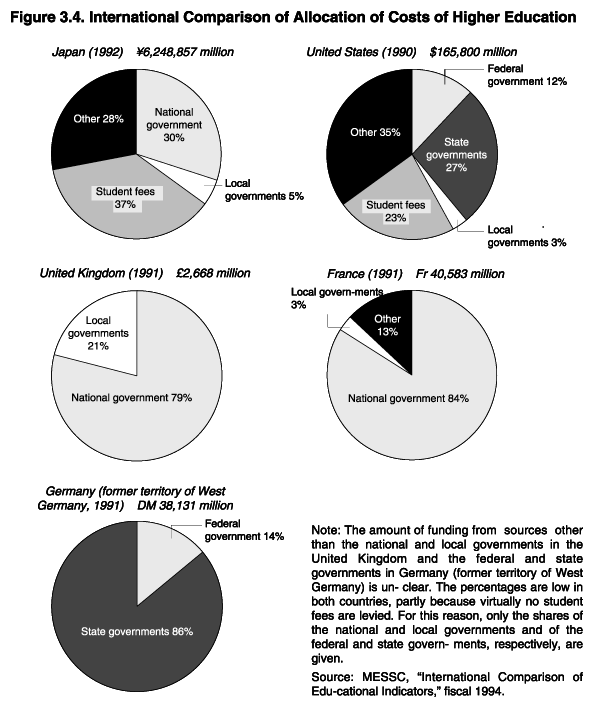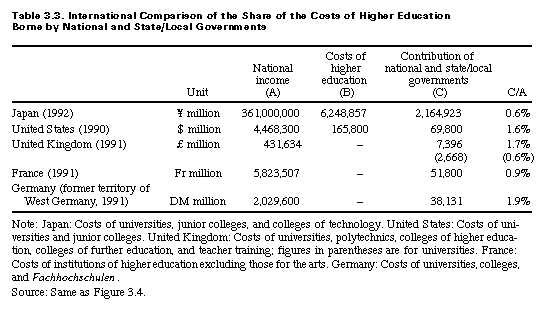| Home > Policy > White Paper, Notice, Announcement > White Paper > JAPANESE GOVERMENT POLICIES IN EDUCATION, SCIENCE, SPORTS AND CULTURE 1995 > Remaking Universities Chapter 3 Section 2 1 | ||
Following is an analysis of the way in which the costs of higher education are met in Europe and the United States ( Figure 3.4 ).
Most of the costs of state universities, which form the majority of public universities in the United States, are borne by the states establishing them. Other sources of income include student fees, donations, and revenue from commercial activities. Student fees are the greatest source of income for private universities, but they also receive public funding through levies on federal research grants to individual researchers or groups. In regard to student aid, efforts are being made to improve scholarship systems, including federal grants and federally guaranteed loans, whereby the federal government guarantees the repayment of loans from private-sector financial institutions.
Universities are independent corporations, but they rely on national government subsidies for most of their financial resources. Students are required to pay tuition and other fees, but these are included in scholarships paid to full-time students by local educational authorities, so in reality there is no financial burden on students. Although student scholarships are disbursed by local educational authorities, the cost is met by the national government.
Most institutions of higher education are national, and most costs are met by the national government. The cost to students is limited to registration fees and so on; there are no tuition fees.
Most institutions of higher education are established by state governments, and the costs are borne by the federal and state governments. No tuition fees are charged. Students receive scholarships (half grant, half loan) under the Federal Training Assistance Act, with the amount adjusted according to parents' income and other factors.
In Japan the contribution of the national and local governments to the costs of higher education is equivalent to 0.6% of national income. It is not possible to make precise comparisons because of the different systems used, but the percentage of government contributions is lower in Japan than in European countries and the United States ( Table 3.3 ).
Allocation of the costs of higher education in Japan is outlined in section 1. Comparison with Europe and the United States shows that the share of public expenditure is low in Japan and that students bear a high percentage of the costs through tuition and other fees. The ratio of total government outlays to national income tends to be relatively high in Europe and the United States, and public expenditure thus accounts for a large share of the costs of higher education. Scholarship systems are also comparatively generous. In other words, the costs of higher education are spread across society as a whole.


| Back to Top | MEXT HOME |